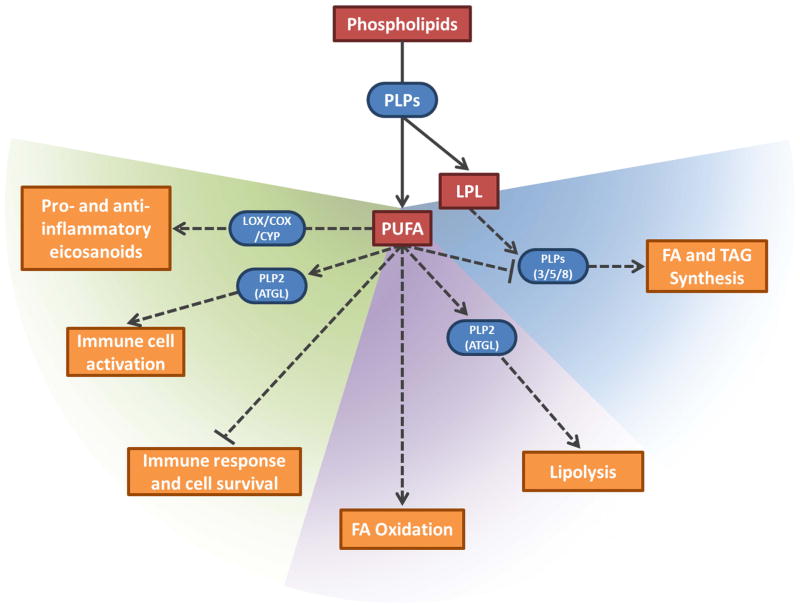Fig. 1.
Diverse roles of patatin-like phospholipases (PLPs) and their products in immune regulation (left/green region), lipolysis (middle/purple region), and lipogenesis (right/blue region). PLPs release polyunsaturated fatty acids (PUFA) and lysophospholipids (LPL) from phospholipids. These products can directly alter membrane fluidity and can also act as signaling molecules to regulate lipid metabolism and cellular signaling pathways. PUFAs can be oxidized by LOX, COX, and CYP to form both pro- and anti-inflammatory eicosanoids (figure 3 for details). Some PLPs (e.g. PNPL2/ATGL, PNPLA3, PNPLA5, and PNPLA8 in mammals) can be regulated by PUFAs and LPLs to maintain stringent control over immune responses and lipid homeostasis (figure 2 for details). Substrates and signaling molecules are red, enzymes are blue and rounded, and altered downstream processes are orange. Activation and inhibition are indicated with arrows and bar-headed lines, respectively. Dashed lines indicate indirect pathways.

